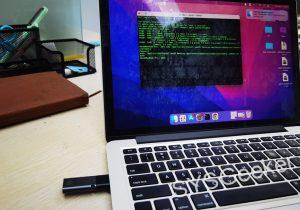Table of Contents
Visual Studio Code (VS Code) has become a popular code editor for programmers of all levels. It allows us to write, debug and execute code with ease. However, there are times when we may need to completely remove VS Code from our Mac for various reasons such as to free up disk space, to upgrade to a newer version, or simply because we no longer use it. In this article, we will go through various methods to completely remove VS Code from your Mac.
What’s Needed:
Before jumping into the methods to remove VS Code completely from your Mac, make sure that you no longer need any of the files or data that you might have created using VS Code. Removing VS Code will also remove all the related files, folders and data from your Mac. Secondly, make sure that you have administrative privileges on your Mac to remove VS Code, as these methods may require root access.
Video Tutorial:
What requires your attention is…?
Be careful while removing VS Code from your Mac since it can remove important system files unintentionally. It is recommended to take a backup of all important files and data before proceeding with any of the following methods.
Method 1: Remove VS Code Manually
You can remove VS Code manually by following the simple steps below:
Step 1: Quit Visual Studio Code and all its processes.
Step 2: Open the Applications folder and locate the Visual Studio Code app.
Step 3: Drag the Visual Studio Code app from the Applications folder to the Trash folder.
Step 4: After moving the app to the Trash, right-click on the Trash icon and select “Empty Trash”.
Pros:
It is a simple and quick method to remove VS Code from your Mac.
Cons:
It may leave some related files and data on your Mac, and may require additional effort to remove them.
Method 2: Remove VS Code using Terminal
The Terminal on your Mac allows you to execute various commands and scripts to perform operations that are not possible through the graphical user interface. You can use the Terminal to remove VS Code and all its related files more comprehensively. Follow the below steps to remove VS Code using Terminal:
Step 1: Open the Terminal app on your Mac.
Step 2: Execute the following command to display a list of all the applications installed on your Mac:
ls /Applications/
Step 3: Find the Visual Studio Code app in the list of apps displayed.
Step 4: Execute the following command to remove the app:
sudo rm -rf /Applications/Visual\ Studio\ Code.app
Pros:
It is a more comprehensive method to remove VS Code and its related files.
Cons:
It may be challenging for those who are unfamiliar with the command-line interface.
Method 3: Remove VS Code using an uninstaller app
There are uninstaller apps available that can remove apps, their related files, and data comprehensively from your Mac. AppCleaner is one such uninstaller that is easy to use, free, and can remove VS Code and its related files. Follow the below steps to remove VS Code using AppCleaner:
Step 1: Download and install the AppCleaner app on your Mac.
Step 2: Open the AppCleaner app.
Step 3: Drag the Visual Studio Code app from the Applications folder to the AppCleaner window.
Step 4: Click on the “Remove” button to remove the app and its related files.
Pros:
It is an easy-to-use and effective method to remove VS Code and its related files.
Cons:
It may not be efficient for removing some files, and may require additional effort to remove them.
Why Can’t I remove Visual Studio Code?
1. You may not have administrative privileges on your Mac that are required to remove VS Code and its related files.
2. Some files related to VS Code may be locked or in use by other processes, preventing their removal.
3. You may not have the latest version of macOS installed on your Mac, which could be incompatible with VS Code.
Fixes:
1. Make sure that you have administrative privileges on your Mac before attempting to remove VS Code.
2. Quit all the processes related to VS Code to release any locked or in-use files.
3. Update your macOS to the latest version, which supports VS Code and its related files.
Implications and Recommendations:
Removing VS Code may delete all data and files that you may have created using VS Code. Therefore, make sure that you have backed up all the important files before proceeding with any of the above methods. Additionally, it is recommended to use a reliable uninstaller or Terminal commands to remove all of the related files and data to ensure that no unnecessary or unwanted files are left behind on your Mac.
FAQs:
Q1: Can I reinstall VS Code after removing it from my Mac?
A1: Yes, you can reinstall VS Code after removing it from your Mac.
Q2: Will removing VS Code affect the other apps on my Mac?
A2: No, removing VS Code should not affect the other apps on your Mac.
Q3: Will removing VS Code free up storage space on my Mac?
A3: Yes, removing VS Code and its related files will free up storage space on your Mac.
Q4: How do I know that all the files related to VS Code have been removed?
A4: You can use the Terminal or an uninstaller app to remove all the files related to VS Code to ensure that nothing is left behind.
Conclusion:
In this blog post, we discussed the various methods to completely remove Visual Studio Code from your Mac. We walked you through removing VS Code manually, using Terminal commands, and using an uninstaller app to remove all the related files. Remember to back up all important files before attempting any of the methods, and to check that all files related to VS Code have been removed to free up storage space on your Mac.
